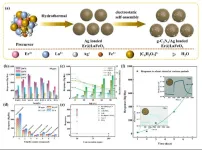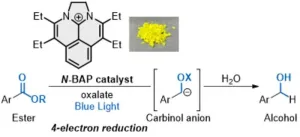The findings were published in the New England Journal of Medicine and presented at the College on Problems of Drug Dependence (CPDD) meeting on Sunday, June 16, 2024. Launched in 2019, the HEALing Communities Study is the largest addiction prevention and treatment implementation study ever conducted and took place in 67 communities in Kentucky, Massachusetts, New York, and Ohio – four states that have been hard hit by the opioid crisis.
Despite facing unforeseen challenges, the HEALing Communities Study successfully engaged communities to select and implement hundreds of evidence-based strategies over the course of the intervention, demonstrating how leveraging community partnerships and using data to inform public health decisions can effectively support the uptake of evidence-based strategies at the local level.
“This study brought researchers, providers, and communities together to break down barriers and promote the use of evidence-based strategies that we know are effective, including medications for opioid use disorder and naloxone,” said NIDA director, Nora D. Volkow, M.D. “Yet, particularly in the era of fentanyl and its increased mixture with psychostimulant drugs, it’s clear we need to continue developing new tools and approaches for addressing the overdose crisis. Ongoing analyses of the rich data from this study will be critical to guiding our efforts in the future.”
NIH launched the HEALing Communities Study, a four-year, multisite research study to test a set of evidence-based interventions for reducing overdose deaths across health care, justice, and behavioral health settings. Over 100,000 people are now dying annually of a drug overdose, with over 75% of those deaths involving an opioid. Numerous evidence-based practices have been proven to prevent or reverse opioid overdose, but these strategies are gravely underused due to a number of barriers.
As part of the intervention, researchers collaborated with community coalitions to implement evidence-based practices for reducing opioid overdose deaths from the Opioid-Overdose Reduction Continuum of Care Approach. These evidence-based practices focus on increasing opioid education and naloxone distribution, enhancing access to medication for opioid use disorder, and safer opioid prescribing and dispensing. The intervention also included a series of communication campaigns to help reduce stigma and increase the demand for evidence-based practices.
Communities were randomly assigned to either receive the intervention (between January 2020 and June 2022) or to the control group (which received the intervention between July 2022 and December 2023). To test the effectiveness of the intervention on reducing opioid-related overdose deaths, researchers compared the rate of overdose deaths between the communities that received the intervention immediately with those that did not during the period of July 2021 and June 2022.
Between January 2020 and June 2022, intervention communities successfully implemented 615 evidence-based practice strategies (254 related to overdose education and naloxone distribution, 256 related to medications for opioid use disorder, and 105 related to prescription opioid safety).
Despite the success in deploying evidence-based interventions in participating communities, between July 2021 and June 2022, there was not a statistically significant difference in the overall rate of opioid-involved overdose deaths between the communities receiving the intervention and those that did not, (47.2 opioid-related overdose deaths per 100,000 people in the intervention group, versus 51.7 in the control). The study team is also examining data on the impact of the intervention on total overdose deaths and examining specific drug combinations, such as stimulants and opioids, and on non-fatal opioid overdoses, among other study outcomes.
“The implementation of evidence-based interventions is critical to addressing the evolving overdose crisis,” said Miriam E. Delphin-Rittmon, Ph.D., HHS Assistant Secretary for Mental Health and Substance Use and the leader of SAMHSA. “This study recognizes there is no quick fix to reduce opioid overdose deaths. Saving lives requires ongoing commitment to evidence-based strategies. The HEALing Communities Study facilitated the implementation of 615 evidence-based practice strategies, with the potential to yield lifesaving results in coming years.”
The authors highlight three specific factors that likely weakened the impact of the intervention on reducing opioid-related overdose deaths. First, the intervention launched two months before the COVID-19 shutdown which severely disrupted the ability to work with health care, behavioral health, and criminal legal systems in implementing evidence-based practices. Indeed, due in large part to the emergence of the COVID-19, only 235 of the 615 strategies (38%) were implemented before the comparison period began in July 2021.
Second, after communities selected which evidence-based practices they wanted to implement, they only had 10 months to implement them before the comparison period began. The authors note that this was not enough time to robustly recruit necessary staff, change clinical practice workflows, or develop new collaborations across agencies and organizations. They note more time to implement these strategies, and more time between implementation and measuring results, may be needed to observe the full impact of the intervention.
Lastly, significant changes in the illicit drug market could have impacted the effectiveness of the intervention. Fentanyl increasingly permeated the illicit drug supply, and was increasingly mixed or used in combination with stimulant drugs like methamphetamine and cocaine, or in counterfeit pills made to look like prescription medications. The increasing use of fentanyl, as well as xylazine, over the study period posed new challenges for treatment of opioid use disorder and opioid-related overdose.
“Even in the face of a global pandemic and worsening overdose crisis, the HEALing Communities Study was able to support the implementation of hundreds of strategies that we know save lives,” said Redonna Chandler, Ph.D., director of the HEALing Communities Study at NIDA. “This is an incredible feat for implementation science, and shows that when we provide communities with an infrastructure to make data-driven decisions, they are able to effectively implement evidence-based practices based on their unique needs.”
The HEALing Communities Study was supported and carried out in partnership between the National Institute of Health’s National Institute on Drug Abuse (NIDA) and the Substance Abuse and Mental Health Services Administration (SAMHSA) through the NIH HEAL Initiative.
Helping to End Addiction Long-term®, NIH HEAL Initiative®, and HEALing Communities Study® are registered service marks of the Department of Health and Human Services.
If you or someone you know is struggling or in crisis, help is available. Call or text 988 or chat at 988lifeline.org. To learn how to get support for mental health, drug or alcohol issues, visit FindSupport.gov. If you are ready to locate a treatment facility or provider, you can go directly to FindTreatment.gov or call 800-662-HELP (4357).
Reference: JH Samet, et al. Community-based Cluster Randomized Trial to Reduce Opioid Overdose Deaths. New England Journal of Medicine. DOI: 10.1056/NEJMoa2401177 (2024).
###
About the National Institute on Drug Abuse (NIDA): NIDA is a component of the National Institutes of Health, U.S. Department of Health and Human Services. NIDA supports most of the world’s research on the health aspects of drug use and addiction. The Institute carries out a large variety of programs to inform policy, improve practice, and advance addiction science. For more information about NIDA and its programs, visit www.nida.nih.gov.
About the National Institutes of Health (NIH): NIH, the nation’s medical research agency, includes 27 Institutes and Centers and is a component of the U.S. Department of Health and Human Services. NIH is the primary federal agency conducting and supporting basic, clinical, and translational medical research, and is investigating the causes, treatments, and cures for both common and rare diseases. For more information about NIH and its programs, visit www.nih.gov.
About substance use disorders: Substance use disorders are chronic, treatable conditions from which people can recover. In 2022, nearly 49 million people in the United States had at least one substance use disorder. Substance use disorders are defined in part by continued use of substances despite negative consequences. They are also relapsing conditions, in which periods of abstinence (not using substances) can be followed by a return to use. Stigma can make individuals with substance use disorders less likely to seek treatment. Using preferred language can help accurately report on substance use and addiction. View NIDA’s online guide.
NIH…Turning Discovery Into Health®
END



